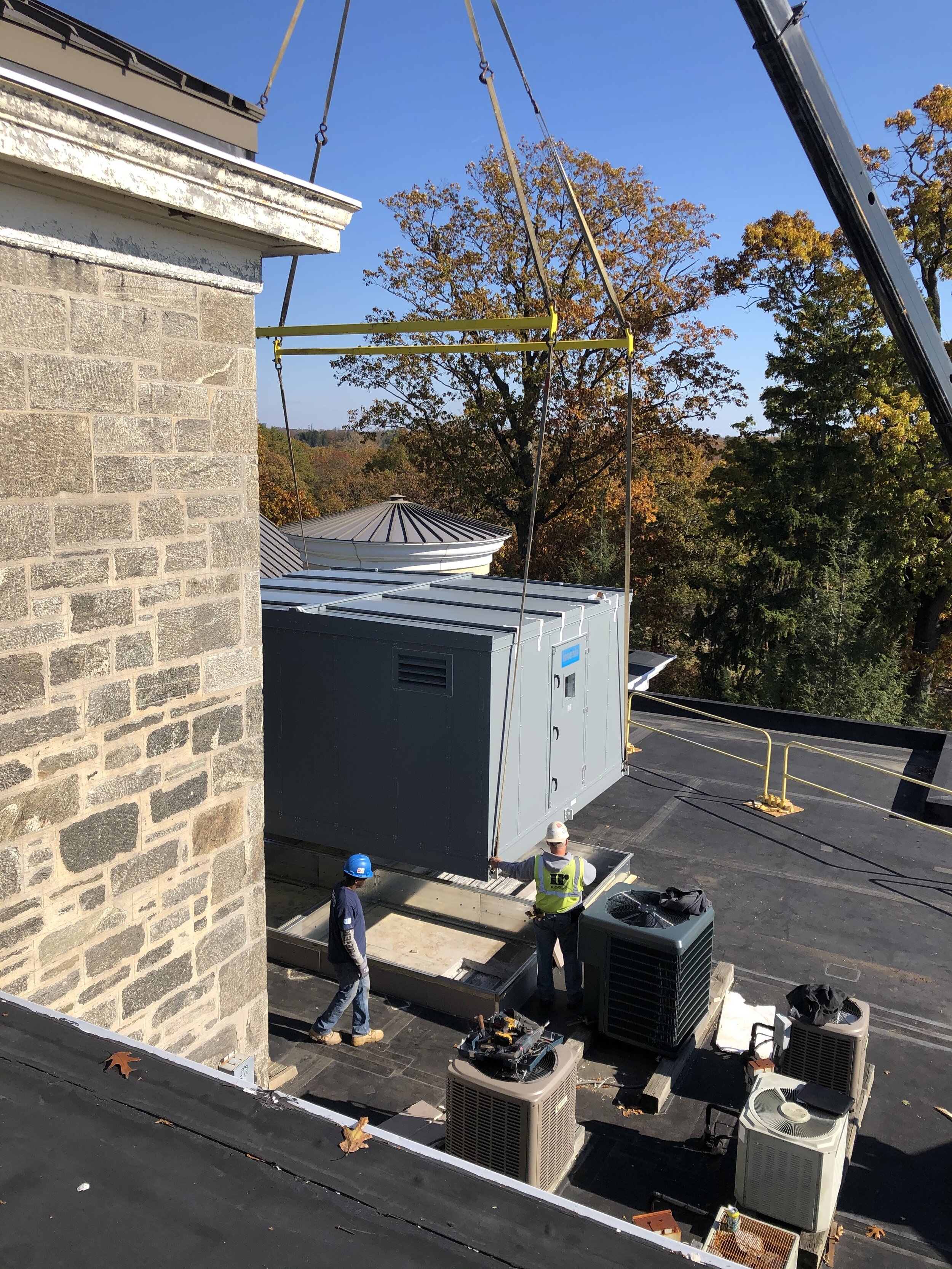Greenwich Sentinel | By Anne W. Semmes
Bob and Gale Lawrence are champions of the New Bruce. With Bob’s PhD in Science and Gale’s Masters in Art Education, the two longtime Greenwich civic leaders constitute, in Bob’s words, “a renaissance da Vincian couple.” The passions they share are for both art and science – what Bob describes as “a magical interface that is at the heart of what the Bruce Museum’s transformative renovation and expansion project is all about.”
So, no surprise Gale would serve as a Bruce Docent early on, and on Committees of Honor funding exhibitions and lecture series, and Bob would engage in the Bruce Science Committee, as Chair, then Board Chairman during the genesis of the New Bruce.
“The more we engaged in the Bruce,” says Bob, “the more we realized there were significant imbalances in the Museum’s layout and design. For example, we had no permanent gallery to display the Museum’s fabulous art collection and a very small space for temporary science exhibitions, plus only one classroom to serve both art and science education.”
“The good news,” Bob continues, “was that the Museum staff really excelled at developing programs and exhibitions that addressed timely and topical issues, such as climate change and the role of women in art, which is the first part of the Museum’s mission—‘to promote the understanding and appreciation of Art and Science.’”
“The fact that enhanced programming appeals to people across our community of all ages and abilities, including those with special needs,” adds Gale, “speaks directly to the second part of our mission—‘to enrich the lives of all people.’”
It was during 2010-11 that the two began to see, says Bob, “vigorous discussions of a Museum expansion emerge from the Board of Trustees, longtime patrons, and staff.” A series of action steps followed to build a solid foundation of essential information to define and design a “New Bruce.” That foundation included a Long Range Strategic Plan compiled with help from the Harvard Business School Community Partners, Board Self-assessment (Board Source), and a Board-driven “deep-dive” into exploring synergies offered by the Museum’s dual focus on art and science. Thus was born the “da Vinci Project,” so named by Bob, along with a comprehensive Feasibility Study for the necessary Capital Campaign.
By early 2013, the Board and Executive Director Peter C. Sutton decided to proceed with the New Bruce initiative and selected Board member Bob Lawrence and Bob Goergen as Co-Chairs of an Architectural Selection/Building Committee. It was, says Bob, “Huge commitment; game-on!”
To guide the Museum in its search for the architectural firm that would best conceptualize that New Bruce, the Board engaged Reed Kroloff, former Editor of Architecture magazine, and at the time Director of Cranbrook Academy.
“From Kroloff’s list of 30 top firms with experience in museum design, we narrowed the list over five months to three outstanding firms to participate in a paid competition,” Bob recalls. “By November we had a clear winner, the New Orleans firm EskewDumezRipple (EDR), which had produced a stunning design with exceptional programming functionality and practicality. As Steve Dumez, EDR Principal and Director of Design, said at the time, ‘Our interest in this expansion for the Bruce Museum is drawn from a longstanding belief that art and architecture play an essential role in enriching the lives of those who experience them.’”
The EDR team included Reed Hilderbrand Landscape Architects and M. Goodwin Museum Planning, Inc., leaders in their respective fields. Soon after their notification as winners of the competition, Reed Hilderbrand would be named the ASLA Landscape Architecture Firm of the Year, and EDR would receive the American Institute of Architecture Firm of the Year Award.
In mid-2014, Bob was elected Chairman of the Board, succeeding his Bruce mentor Patricia Chadwick.
“My priority was clear – an affirmative Board vote to approve the plan to create the New Bruce. This was accomplished October 15, 2014 at a Board Retreat, officially launching the design and construction process and establishing The New Bruce Capital Campaign. In my judgement, this is the most important strategic decision in the 100-plus-year history of the Bruce Museum.”
For the past five years the Museum has progressed through all architectural phases, including Value Engineering, Town reviews and approvals, and are finalizing construction drawings and Town permitting, in collaboration with Andy Fox of Stone Harbor Land Co. & Project Advisors who serves as the Museum’s Owner’s Rep – with the contractors being the Turner Construction Company.
Of the Museum’s plans for the new art wing, Gale is “delighted” she says, “to see that we will, at last, have permanent galleries for viewing the Bruce art collection. In fact, five permanent galleries plus a vastly expanded education suite! Just think of the art history experience that offers.” She points to the Museum’s new microsite about the expansion project, NewBruce.org, that features a virtual tour of the building design, floor plans, and a link for those wishing to make a much-needed contribution to help the Campaign for the New Bruce complete its fundraising goals.
“For over 100 years the Bruce has been a beacon of culture for our community, enriching life through art and science,” says Bob. “The stunning New Bruce creates a cutting-edge museum experience and magnetic destination that strongly connects our tradition and past to a vision of the future.”
True to form, this da Vincian couple of Gale and Bob Lawrence view the New Bruce, says Bob, “as a Renaissance Museum for the 21st century, right in the heart of Greenwich.





























![CAMPAIGN BANNER[1].png](https://images.squarespace-cdn.com/content/v1/599354f6e3df285bc51e9c9b/1567331282827-JLS2ZVJ52WJ556W0K1X0/CAMPAIGN+BANNER%5B1%5D.png)